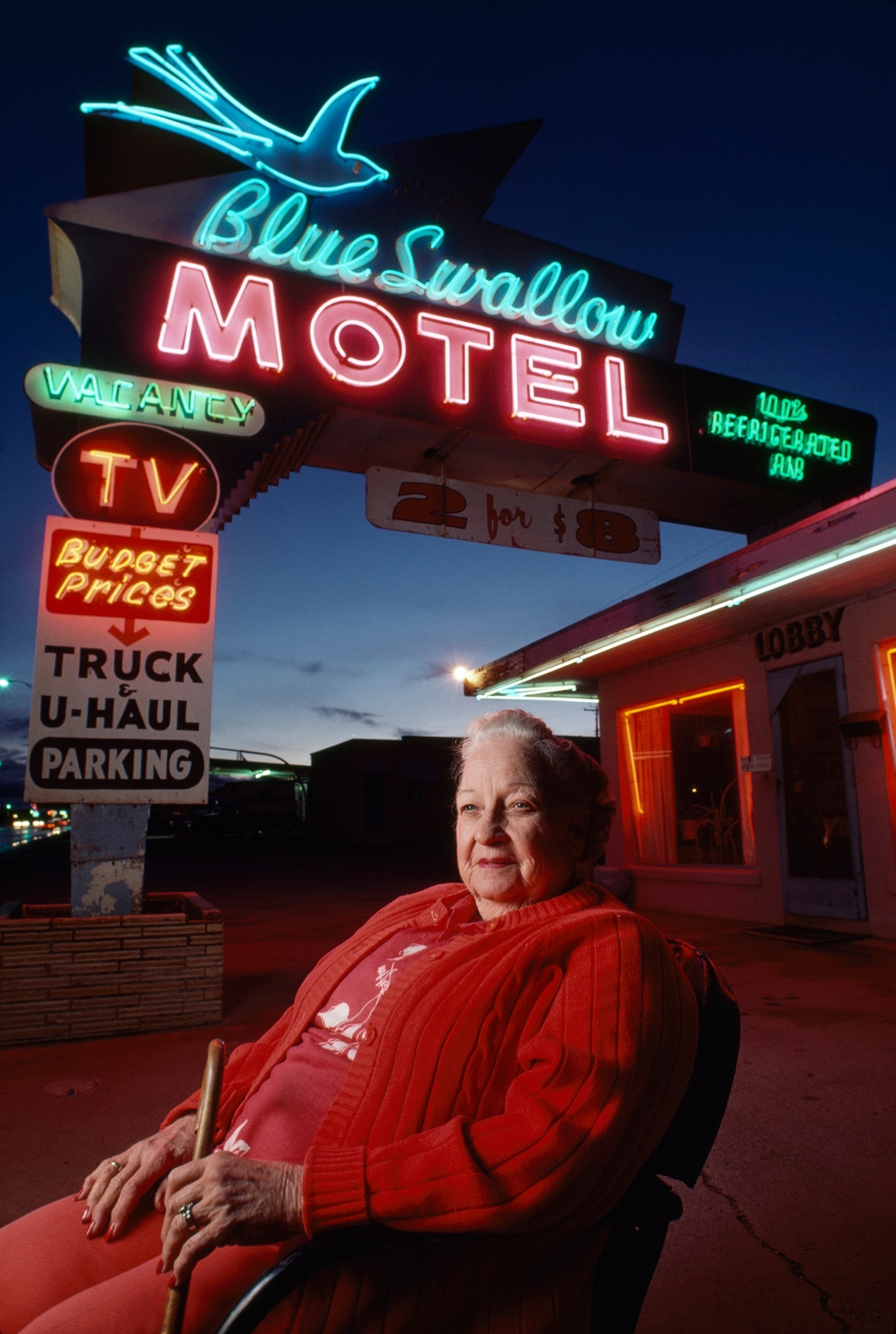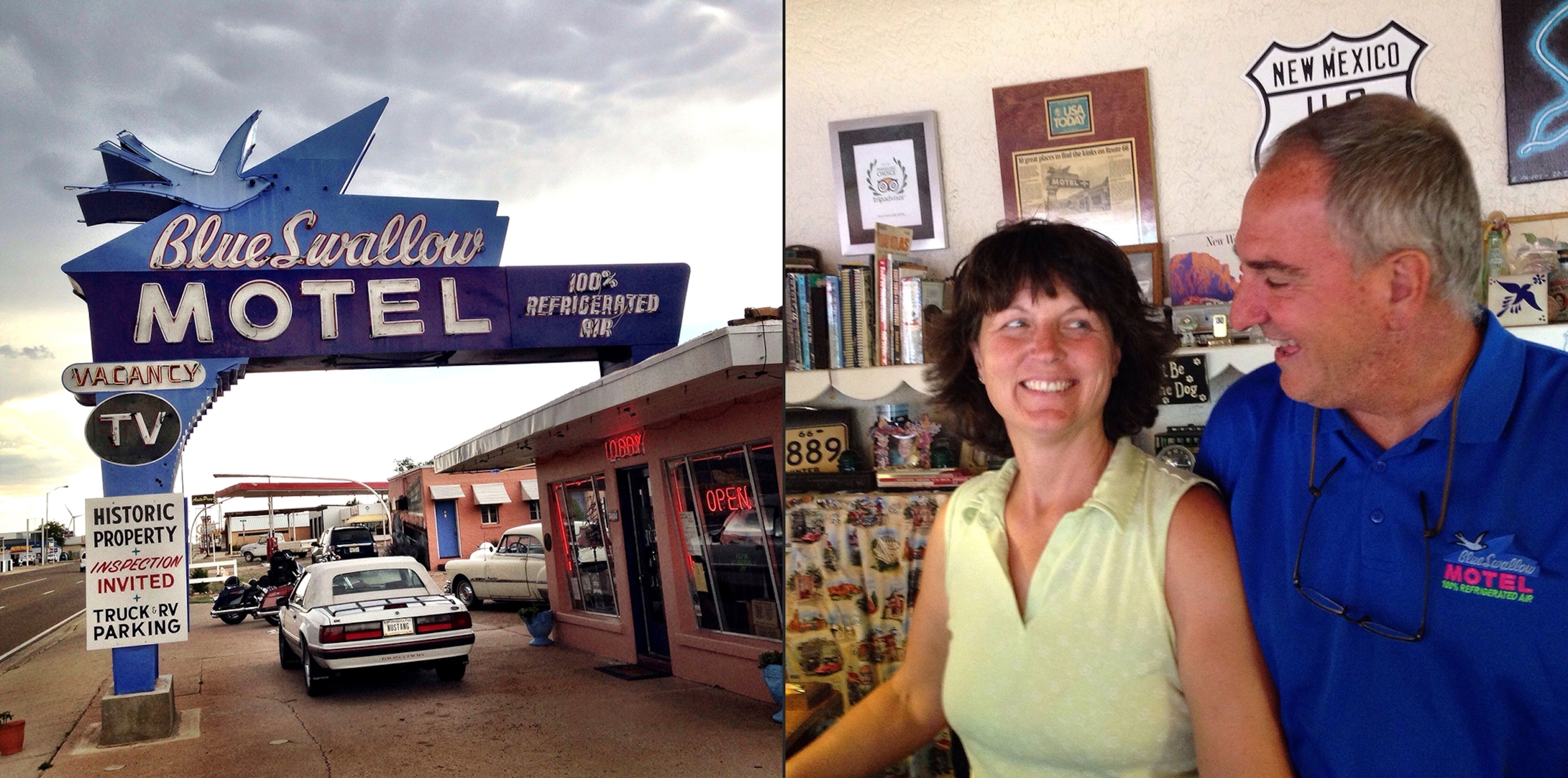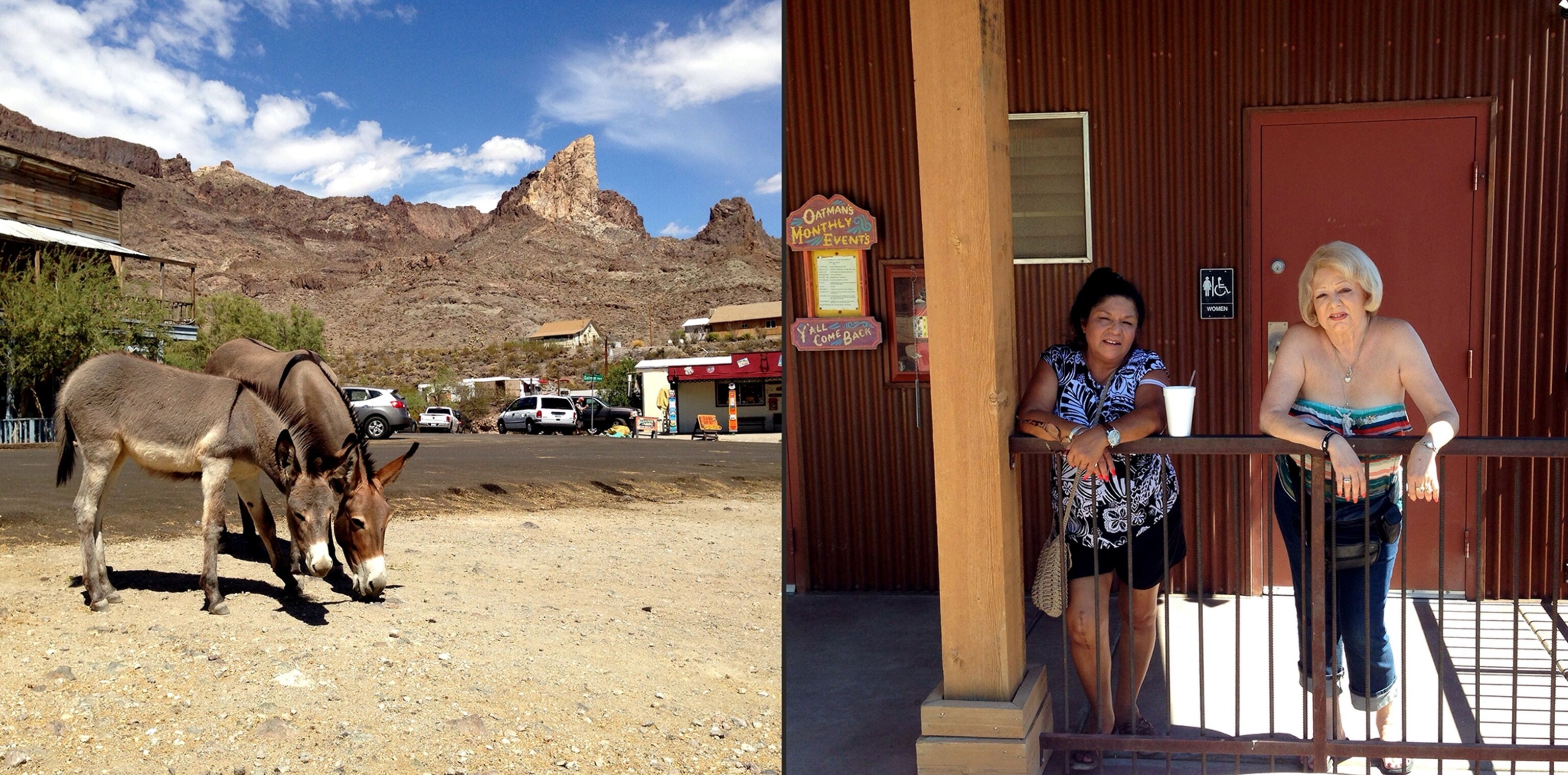
On What's Left of America's 'Mother Road,' Remnants of Road Trips and Migrations
An escape route during the Depression, Route 66 is now an emblem of self-discovery—if you can find it. This is the second of three parts.
"If you ever plan to motor west, travel my way, take the highway that is best. Get your kicks on Route 66."—Bobby Troup
It's possible to drive from Oklahoma City to California's Central Valley in two days. But that wasn't our plan.
In his classic novel The Grapes of Wrath, John Steinbeck called Route 66 the "Mother Road" because it beckoned to desperate migrants fleeing the Dust Bowl as they moved west in search of jobs in the 1930s.
But in the years after the Depression, the highway took on mythic status as America's main street for adventure. It's the road Woody Guthrie sang about and probably had in mind when he once asked a friend in New York: "How do you get from here to the United States?"
Our family of three—my husband, Teo; our 16-year-old son, Miro; and me—intended to make the trek in ten days, longer than it took Steinbeck's fictional Joad family to reach California, because we wanted to stop frequently to soak up the road's history as part of our trip to mark the 75th anniversary of the novel's publication.
Outside Amarillo, Texas, we spied the profile of the Cadillac Ranch, a group of ten cars planted nose-down in the desert like modern-day Easter Island totems attracting Route 66 pilgrims. A group called the Ant Farm created the art installation in 1974, and almost immediately visitors armed with spray paint began using the cars as their own canvases, which the artists encouraged. We smelled spray paint in the air as soon as we got out of the car. I picked up a half-used can from the ground to add my own design to one of the cars.
Later we crossed into New Mexico and stopped in Tucumcari at the Blue Swallow Motel, a "motor court" where each room has its own garage. A neon sign outside the L-shaped pink adobe building advertises "100% Refrigerated Air."

National Geographic photographer Chris Johns had taken a portrait of the motel's longtime owner, Lillian Redman, under that sign 30 years ago for a magazine article called "Beyond the Dust Bowl." The current owners, Kevin and Nancy Mueller, had a copy of the magazine and Kevin paged through to Lillian's picture.
Lillian's husband had given her the motel as an engagement present, and she ran the place for four decades before selling it in 1998. It broke Lillian's heart when Interstate 40 bypassed Route 66 to the south in the 1960s and traffic through town slowed to a trickle.

The Blue Swallow is a relic of the postwar period when newly mobile Americans traveled Route 66 to visit the Grand Canyon or Disneyland, and motels and diners sprang up to cater to this pioneer wave of tourism. In 1946, just six years after John Ford's movie version of The Grapes of Wrath had planted the Route 66 highway sign in Americans' subconscious, Nat King Cole teamed up with songwriter Bobby Troup to give the route its more upbeat anthem: "(Get Your Kicks on) Route 66."
The feel-good rhythm-and-blues tune later was recorded by Chuck Berry and by the Rolling Stones, and the road's mystique grew. By the 1960s the highway was an emblem of the restless spirit of young Americans on a quest for self-discovery. A Route 66 TV show chronicled the travels of two adventurous young men exploring the West in their Corvette convertible.

Off the Interstate, Into Americana
The trouble with trying to capture the flavor of the original Route 66 is that so much of the road has been taken over by Interstate 40.
In New Mexico, we saw a lot of themed businesses—Route 66 Self-Storage, Route 66 Beef Jerky, Route 66 Cleaners—as we drove on preserved segments of the historical road in Albuquerque and Santa Fe and Gallup, but no sign of the two-lane highway itself until we reached Arizona.
Just west of Williams, where we stayed for two nights while hiking the Grand Canyon, we exited the interstate onto one of the longest stretches of what's left of Route 66, a two-lane road where we drove for miles without seeing any cars and felt like a small dot in the Southwest's landscape of mesas and rock formations. Even Miro joined in as Teo and I sang The Battle Hymn of the Republic at the top of our lungs.
The road took us through Ash Fork into Seligman, where we stopped for a burger and Coke at a diner called Delgadillo's Snow Cap Drive-In, whose owners are known for antics like squirting customers with fake mustard. A group of blond Germans posed for pictures on their tour of the "Wild West."
We continued along the two-lane highway to Peach Springs, a desolate town in the Hualapai Indian Reservation adjacent to the Grand Canyon. We stopped counting all the shuttered gas stations and other Route 66 businesses that had failed because they were too far off the interstate. They were rusting ruins in a majestic landscape.
It was nostalgia for this lost culture of mom-and-pop eateries and motor courts and gas stations that inspired Pixar's 2006 animated film Cars, a story about a race car that accidentally ends up in a fictional town called Radiator Springs (based on Peach Springs) that's been bypassed by the interstate.
The movie celebrates a bygone era when a road trip meant stopping along the way to mix it up with local attractions instead of speeding through to your final destination. As the main characters watch cars on the interstate near the Grand Canyon, one says: "They're driving right by. They don't even know what they're missing."
Cars is partly responsible for a current surge in Route 66 tourism. The Wigwam Village Motel in Holbrook, Arizona (depicted in the movie as the Cozy Cone Motel), for example, attracts customers seeking a retro experience. Each of the 15 rooms is a white tepee made of concrete and steel and equipped with a sink, toilet, and shower.
We'd planned to stop at the motel, but then, at a gas station in Sanders, Arizona, an Indian couple from the nearby Zuni reservation asked for a ride. The young woman said her sister had been in a car accident and was in critical condition at a Flagstaff hospital.
We don't usually pick up hitchhikers—and didn't know whether to believe her—but we were channeling Steinbeck, so we drove them the two hours to Flagstaff. With a couple of American Indians in the back seat explaining that their ancestors emerged from a crack in the Grand Canyon and showing Miro a soap-size hunk of turquoise they used to make jewelry, stopping at the Wigwam Village Motel suddenly seemed like an unnecessary side trip.
My favorite stretch of Route 66 was the nail-biting road up a mountain of switchbacks just outside Kingman, Arizona. We leaned to the left in an unconscious effort to keep the car from falling off the cliff. At the top was Sitgreaves Pass at 3,500 feet, where we had a glorious view of gold and orange rock formations.

We descended slightly to reach the "ghost town" of Oatman, named for a 13-year-old girl captured in 1861 by Indians who tattooed her face before she was ransomed back to white authorities six years later.
I expected tumbleweeds and boarded-up buildings. Instead, Oatman was chockablock with T-shirt shops and boutiques. Another surprise: Dozens of wild burros, descendants of animals brought in by gold miners, roamed the town and nuzzled up to us.

Onward to California
It was 102 degrees as we drove down the mountain to arrive in California. In the town of Needles, I insisted on dipping into shallow waters of the Colorado River, just as the Joads did before crossing the Mojave Desert. There was a lot more water in the river when John Ford filmed The Grapes of Wrath movie here in 1940. As its waters have been diverted for farming and to cities, the Colorado has become one of the most endangered rivers in America.
We crossed the Mojave to spend the night in desiccated Barstow, and the next morning bade farewell to Route 66—which heads south to Los Angeles—as we continued west. I was exhilarated finally to drive through the Tehachapi Pass and get our first glimpse of California's Central Valley—four million acres of agricultural bounty now severely threatened by drought.
We pulled over to take a picture and a truck behind us honked in annoyance, just as a driver in Steinbeck's novel did when the Joads pulled over, "silent and awestruck, embarrassed before the great valley."
The mountains on either side of the pass framed a checkerboard of green and yellow fields, which stretched off to the horizon as far as the eye could see. It felt good to be entering the valley.
Follow Barbara Paulsen on Twitter.
Read the other installments in this series:
Part 1: Across Plains, 'Grapes of Wrath' Still Resonates
Part 3: Drought Impacting California's Migrant Workers








